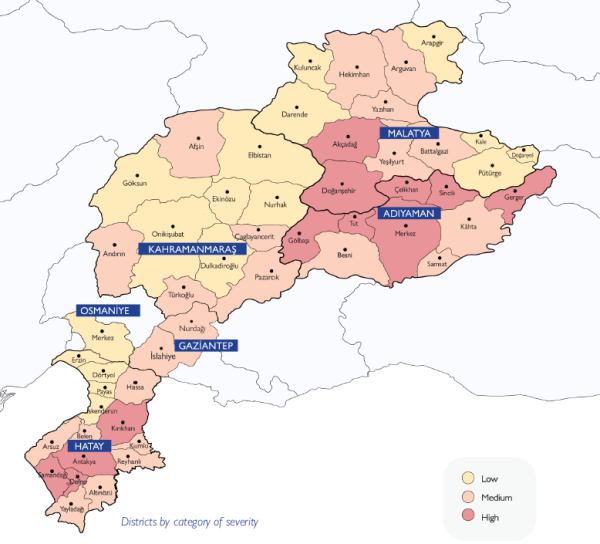Türkiye Earthquake 2023
2024-05 Factsheet - Türkiye Earthquake 2023
Highlights
FACTSHEET - January - May 2024
Fifteen months after the earthquake, while some individuals have started receiving new earthquake houses, over 435,182 people remain in container sites, according to AFAD’s reports. This increase is likely due to a reduction in the number of people in informal sites on a much faster pace since October 2023. As of March, DTM’s latest assessment indicates that 212,480 people are staying in informal sites across six provinces. Among those in informal sites, it is estimated that 40,000 individuals are still living in tents or makeshift shelters.
As part of the sectors work to develop a common strategic program priorities for households in precarious and temporary shelters, the Shelter Sector released a Summer Seasonal Support Recommendation document in May. the Shelter Sector collaborated closely with partners to identify the necessary non-food items (NFIs) and upgrade containers to withstand the summer heat.
NFI
Shelter
Need analysis
- As per DTM’s neighborhood assessment in March 2024, number of containers both AFAD and foldable containers in informal sites has been increased by 41% and 50% respectively since October 2023. This brings new challenges to partners targeting people in informal sites, additionally there has been an increase in number of informal sites in Gaziantep, a province that previously had 23% less informal sites, which requires more attention from the sector and its partner.
- Despite the drop in numbers of tents and makeshift shelters it is estimated that 40,000 individuals are residing in tents across 6 provinces, over 20% of those are non-nationals estimated at over 11,000 individuals.
- According to DTMs March assessment, there is an increase in people not using their damaged houses for their daily needs as previously witnessed. This might be related to the decreased population living in informal sites as well as the demolition of damaged buildings. Thus, there is a need to ramp up the support to households in repairing their low-damaged dwellings.
- As summer season is approaching summer seasonal kits, including shading materials will be needed.
Response
During the first quarter of 2024 Over 141,000 individuals benefited from shelter and NFI assistance, with support from 10 partners. Winterization kits - including heating devices - as well as shelter improvements were provided in the context of harsh winter conditions, targeting 114 districts in Malatya, Hatay, Kahramanmaras, Adiyaman, and Gaziantep. Shelter Sector partners have been delivering key winterization and fire safety messages to households alongside winterization assistance.
Cumulatively, partners have reached over 1 million households to improve interior living conditions against the winter, while 220k households have been supported for enhanced living spaces, and improvements have been made in 12 settlement sites with infrastructure, both formal and informal sites.
In rural areas, based on light repair guidance developed by the sector, targeted households received a total of 258,347 TL for light repairs.
The Shelter Sector is coordinating with shelter partners, the TSS Sector, and the AAP Working Group to disseminate these fire safety messages effectively. And have worked with TRC to develop these key messages.
Gaps / challenges
During this period, the Shelter Sector encountered ongoing difficulties in harmonizing Sector strategies with the government's initiatives. The government communicated specific needs and requests for assistance in various provinces. While the Shelter Sector managed to coordinate a modest response from partners regarding these requests, it primarily focused on providing direct assistance to communities residing in informal clusters or precarious shelters on sites, in collaboration with local authorities. Despite regular referrals received by the Shelter Sector through TSS Sector partners and subsequent communication to partners, operational constraints and other challenges have led to a minimal response in addressing these referrals.

